| artcornwall | |||
| home | features | exhibitions | interviews | profiles | gazetteer | links | archive | forum | |||
Peter Randall-Page: sculptorPeter Randall-Page spoke to artcornwall close to the completion of a major new work for the Eden Project. He also gave us some rarely seen images of student work.
I was very lucky to go to Bath
Academy of Art in the mid '70's. The college was in the small village of
Corsham in Wiltshire. There was plenty of space and some
very
inspiring people. I made a lot of ephemeral large scale outdoor work using
wood, rope and canvas, (above and below right) it was only towards the end that I started using
stone and even then they were more constructions than carvings. Nobody was
carving stone
You now have a huge and
impressive number of exhibitions and commissions to your name. By way of
summarising your CV, is it possible to single out some projects that
seemed particularly decisive in terms of your career or your development
as an artist?
With
hindsight certain works do feel seminal though I would not necessarily
have realised their significance at the time. My first large scale public
commission for Leicester Royal Infirmary in 1982 was a landmark in terms
of scale and ambition and the work I did for Common Ground in Dorset
endorsed my desire to integrate art with place and
You are close to completing a large sculpture for the Eden Project - which will be sited inside the new education centre. There is a lot of information and some excellent pictures on your website, and I would recommend people to take a look. I would guess one of the most important considerations – especially in a location where there is so much already - was the siting of the work. Is it hard to site 'serious' - or at least more contemplative - sculpture in and around the busy thoroughfares of the Eden Project?
My hope is that it will be an
object of contemplation, a still quiet space at the heart of all the
razzmatazz.
Can I ask where in Cornwall the stone was quarried and was it carved on site? When you are working at this scale, how is the image in your head transferred into three dimensions? Do you eg use 3D software to do this or some other kind of computer template? Has the technology for making this kind of work changed much since eg the days of Barbara Hepworth?
www.peterrandall-page.com includes an extensive back catalogue of Peters work, and more detail on the Eden Project sculpture
|
|||
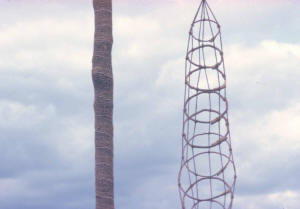
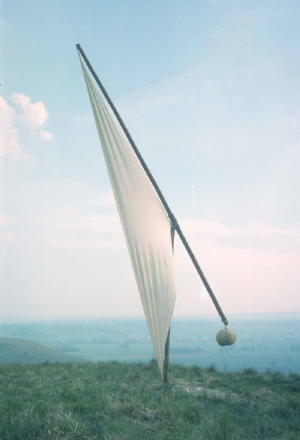
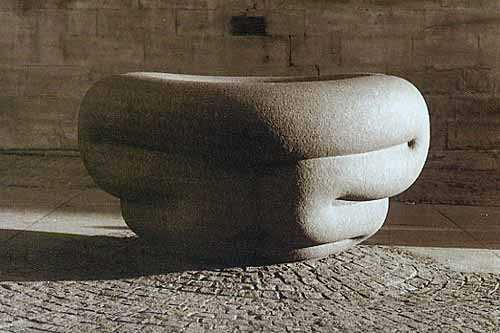 everyday life.
everyday life._small.jpg)
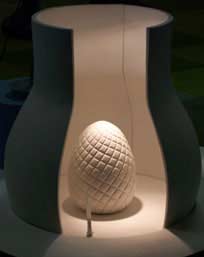
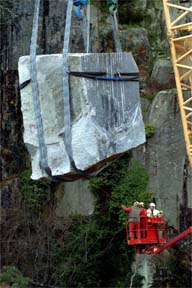 challenges. The computer modelling was useful but in the end
I had to understand the form and pattern physically. The most valuable
tools have been the compass and straight edge. The line and the circle are
things I can understand.
challenges. The computer modelling was useful but in the end
I had to understand the form and pattern physically. The most valuable
tools have been the compass and straight edge. The line and the circle are
things I can understand.